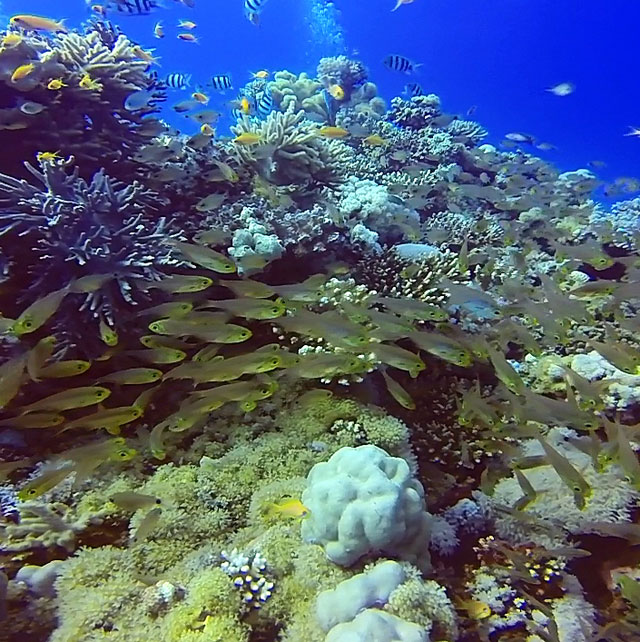Ocean warming is threatening coral reefs globally. Whenever sea temperatures rise in an area, coral reefs degrade. However, a new study has found that corals at or near the equator are less affected than corals elsewhere.
The findings from Florida Institute of Technology were published March 20 in the journal Nature Communications.
The authors analysed field observations from a 20-year global survey of over 3,500 coral study sites led by Reef Check founder and former director Gregor Hodgson.
As expected, coral bleaching was most common in localities experiencing high-temperature stress, but it was significantly less common in those places with high monthly variation in temperatures.
“We found that it took higher temperatures to bleach corals this past decade than it did 20 years ago,” Florida Tech’s Shannon Sully said.
The authors suggest that bleaching at higher temperatures this decade is likely a consequence of the decline in temperature-sensitive corals during previous bleaching events and that the remaining populations now have a higher thermal threshold for bleaching.
“We found that the reefs near the Equator were less affected by bleaching than elsewhere, despite similar thermal-stress levels at equatorial sites,” said Deron Burkepile, a co-author from UCSB.
 Image: Jill Studholme
Image: Jill StudholmeGeographically, the highest probability of coral bleaching occurred 15–20 degrees north and south of the Equator, despite similar thermal stress levels at equatorial sites.
Reef Check’s citizen science divers work hard to survey reefs all over the world so that we have the data we need to understand our reefs and make effective management decisions in a changing planet,” said Jan Freiwald, Reef Check’s executive director.
Coral reefs are the world’s most diverse marine ecosystems. They provide billions of dollars in economic value through coastal protection, food, tourism and pharmaceuticals from the sea. Rapid increases in sea surface temperatures are increasing the frequency and intensity of coral bleaching events, during which corals lose their endosymbiotic algae ? a primary energy source for most reef corals. Coral bleaching can cause coral morbidity and mortality, which leads to losses of coral cover, dramatic changes to coral community composition and even rapid reorganisation of coral-reef-fish communities. The 2014–2017 global coral-bleaching event, the third in the last 20 years, killed corals and other reef organisms over thousands of square kilometres.
Further Reading
A global analysis of coral bleaching over the past two decades, S Sully et al. Nature Communications volume 10, Article number: 1264 (2019)
Image credits:
- Healthy coral reef: Jill Studholme

















